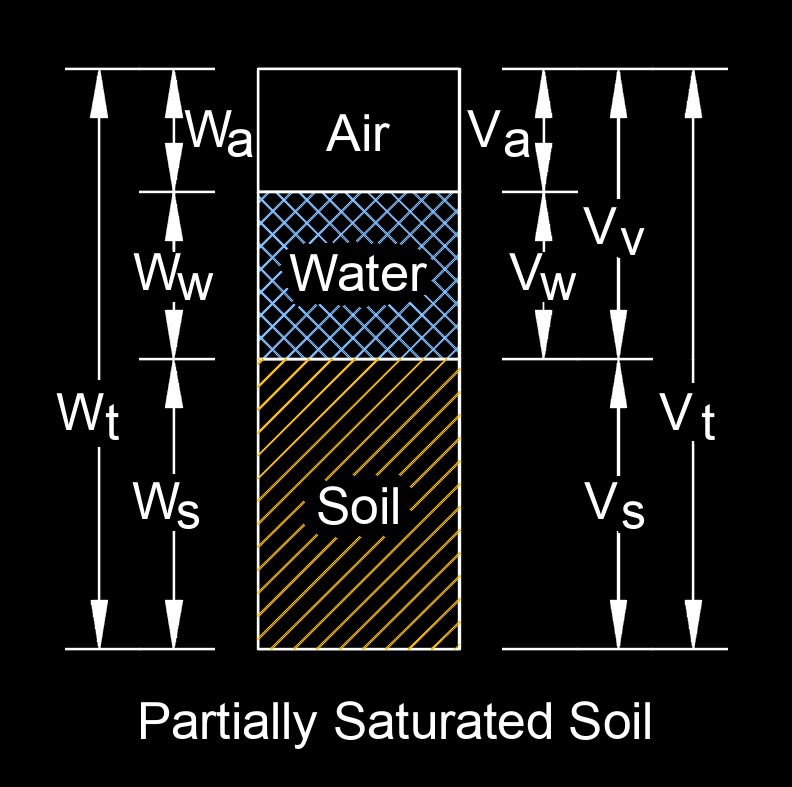Normalized Water Content
Normalized Water Content Formula |
||
| \( \Theta \;=\; \dfrac{ \theta - \theta_r }{ \theta_s - \theta_r }\) | ||
| Symbol | English | Metric |
| \( \Theta \) (Greek symbol Theta) = Normalized Water Content | \(dimensionless\) | \(dimensionless\) |
| \( \theta \) (Greek symbol theta) = Volumetric Water Content | \(ft^3\) | \(m^3\) |
| \( \theta_r \) (Greek symbol theta) = Residual Water Content | \(ft^3\) | \(m^3\) |
| \( \theta_s \) (Greek symbol theta) = Saturated Water Content | \(ft^3\) | \(m^3\) |

Normalized water content, abbreviated as \(\Theta\), also called effective saturation, a dimensionless number, is the water content for which the gradient becomes zero. It is a parameter used in hydrogeology and reservoir engineering to describe the fractional amount of pore space in a rock or soil that is filled with water. It is a fundamental property in the study of fluid flow through porous media, such as underground aquifers, oil reservoirs, or soil.
Normalized Water Content Interpretation
Sw = 0 - Indicates that the porous medium is completely dry, with no water present.
Sw = 1 - Means that the porous medium is completely saturated with water, with no air or other fluids present.
Normalized water content is a crucial parameter in various hydrogeological and reservoir engineering calculations, such as determining the effective permeability of a porous medium, predicting fluid flow rates, and assessing the potential for groundwater contamination or oil reservoir recovery. In the context of oil reservoir engineering, the normalized water content is of particular importance because it helps estimate the remaining oil saturation in a reservoir, which is crucial for optimizing oil production strategies. By monitoring changes in normalized water content over time, engineers can make informed decisions about reservoir management and enhanced oil recovery techniques.

